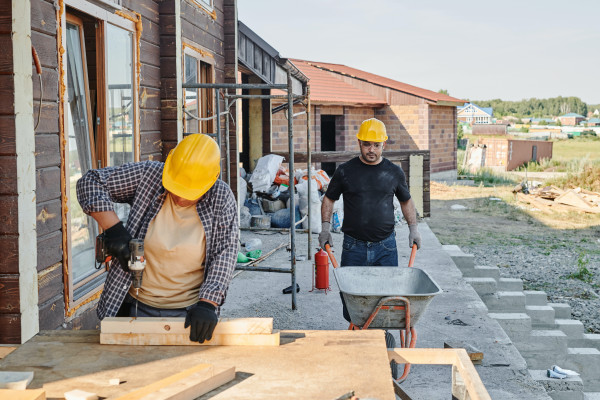

The government has announced an £8.6bn funding package to increase affordable housing stock in an effort to make the UK housing market more accessible to first-time buyers.
Part of its £11.5bn ‘Affordable Housing Programme’ the latest funding allocation is tipped to deliver 119,000 new homes.
This will include 57,000 homes for ownership, 6,250 affordable rural homes, and 29,600 homes for social renting. The latter are typically 50 to 60 per cent of market prices.
Around £5.2bn of the funding package will be delivered outside London by Homes England, whilst the Greater London Authority (GLA) will deliver the remaining cash to homes within London.
The Ministry of Housing, Communities & Local Government anticipates its initial investment to generate up to £26bn of private and public investment, alongside 370,000 jobs for homebuilders and smaller developers.
“Creating more opportunities for home ownership is central to this government,” said housing secretary Robert Jenrick.
“This huge funding package will make the ambition of owning a home a reality for families by making it realistic and affordable.”
Jenrick confirmed 90 new partnerships, made up of councils, housing associations and private providers, successfully bid for a share in the programme funding.
Chief executive of Homes England, Peter Denton, added these partnerships “are creating the conditions needed for institutional investment to catalyse affordable housing supply and give local authorities more of the tools they need to plan and act strategically”.
Housing stock has fallen more than 40 per cent since the beginning of this year, driven in large part by the perception of an “insurmountable” market facing buyers, according to research published by UK estate agent body Propertymark.
The agent’s chief executive, Nathan Emerson, told FTAdviser the housing stock shortage won’t resolve itself this year “by any stretch of the imagination.”
“We’re going into a quiet period, which means the market would only have three months [October, November, December] to put stock on an even keel,” he explained.
“We’ll be into the next year before we start seeing housing stock numbers rising again.”
The government is aiming to deliver up to 300,000 new homes a year by 2025-6, which could seriously boost the UK’s currently declining housing supply.
It is also considering proposals for thousands more custom and self-built (CSB) homes a year.
A review published by Conservative MP Richard Bacon and commissioned by the government found demand for CSB homes sits at a minimum of 30,000 a year, but “could conceivably be as high as 100,000 homes a year”.
Currently, CSB houses in England make up a mere 5 per cent of new supply.
As well as focusing on the supply end of the market, the government launched First Homes this year which offers new homes to first-time buyers at a 30 per cent discount on the open market value.
This added to its 95 per cent mortgage guarantee scheme, designed to help first-time buyers secure a mortgage with a 5 per cent deposit. Until the scheme landed, practically no lenders were offering these mortgages after a mass exodus from the market during the pandemic.
But despite these schemes in place, the gap has widened between how much houses cost and what people earn, making it harder for younger generations to get on the property ladder.
HSBC economist Chris Hare told FTAdviser house price inflation was the “order of the day” for now and predicted affordability to become a “real issue”.
“Over the near term, house price to income ratios have gone up, given drivers such as the stamp duty holiday, and ‘the race for space’, [...] which could continue to put upward pressure on house prices, and price to income ratios for a while.”
ruby.hinchliffe@ft.com



